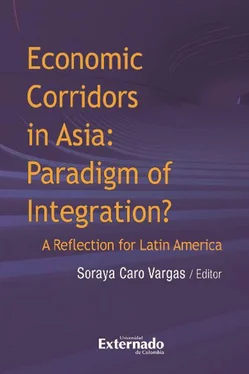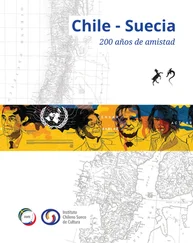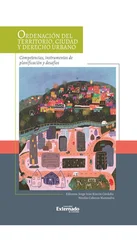In order to address these intrinsic bottlenecks and problems in capacity, the Sagarmala program addresses issues such as port modernization and new port development. This involves reducing structural problems, bureaucratic interference, and ‘capacity expansion of present ports and the development of new Greenfield ports. Port connectivity proposes enhancing the connectivity of the ports to the hinterland, optimizing cost and reducing time of cargo movement through multi-modal logistics solutions including domestic waterways (inland water transport and coastal shipping). Port-linked industrialization through promoting port-proximate industrial clusters and coastal economic zones to reduce logistics cost and time of export–import (EXIM) and domestic cargo. Coastal community development is further aimed at promoting sustainable development of coastal communities through skill development & livelihood generation activities, fisheries development, coastal tourism, etc. ( Sagarmala Project, n.d.).
Apart from the Sagarmala program, one of the elements of faster connectivity has been the freight corridors. India has been working on a number of freight corridors with economic assistance from Japan. Japanese assistance in terms of soft loans is existent in Ahmedabad-Mumbai High Speed Rail, and $100 billion Delhi-Mumbai Industrial Corridor ( Mohammad, 2018) parts of Western Dedicated Freight Corridor, the Delhi-Mumbai Industrial Corridor with twelve new industrial townships, or the Chennai-Bengaluru Industrial Corridor (CBIC) ( Price Waterhouse Coopers -PWC, 2015). ‘In order to accelerate the process Dedicated Freight Corridor Corporation of India (DFCCIL), a special purpose vehicle was established under the administrative control of the Ministry of Railways, to undertake planning & development, mobilization of financial resources and construction, maintenance and operation of the dedicated freight corridors’ (PWC, 2015). The proposal of dedicated freight corridors across the country, marks a strategic turning point in the history of the country’s railway that has essentially run mixed traffic across its network. Once accomplished, the dedicated freight corridors are aimed at improving customer orientation and catering to market requirements. Creation of rail infrastructure on such a scale – unprecedented in independent India – is also expected to drive the establishment of industrial corridors and logistic parks along its alignment (Dedicated Freight Corridor, 2018). ‘The cost for these dedicated freight corridors along the eastern and western routes, spanning 3,360 route km, has been estimated at $ 12 billion’ (Dedicated Freight Corridor, 2018) 5.
The Eastern Dedicated Freight Corridor would be of 1,856 km and is proposed to be divided into two sections. The ‘first section covers an electrified double-track segment of 1,409 km from Dankuni in West Bengal (state) and Khurja in Uttar Pradesh (state). The second section would be a single line segment of 447 km between Ludhiana – Khurja – Dadri. The corridor would cover six states of Eastern India and three states from North India’ (Roy, July 2018). The project would facilitate transportation of coal for steel, finished steel, power plants, food grains, and cement. Along with the freight lines, logistics parks have also been planned. In comparison to the Eastern Dedicated Freight Corridor, it is expected to be a ‘1,504-km-long route and the Western Freight Corridor traverses the states of Haryana, Rajasthan, Gujarat, Maharashtra, and Uttar Pradesh. It is proposed to converge with the Eastern Corridor close to Dadri. This would facilitate the shipping of food grains, iron and steel, fertilizers, and cement, along with other commodities. Along with it, logistics parks in vicinity of Mumbai have been proposed. Additionally, other parks have been proposed closer to Ahmedabad and Gandhinagar in Gujarat, Jaipur and Delhi-National Capital Region’ (Roy, 2018). So far as per the reports ‘306 kms of Western Dedicated Freight Corridor has been completed and a trial run has been launched’ ( The Economic Times, 2019).
With overall progress of over ‘35% achieved so far, these corridors seek to bring a paradigm shift in railway freight operations in the country, thus providing relief to the heavily congested Golden Quadrilateral’ ( Make in India, 2018). Furthermore, Indian Railways under its special purpose vehicle has planned on building four more dedicated freight corridors. ‘The DFCCIL has been assigned the task of conducting preliminary engineering and traffic surveys for the proposed projects. Next in line are East – West Corridor (Kolkata – Mumbai) which will be approximately 2,330 route km in length; North – South Corridor (Delhi – Chennai) of approximately 2,343 route km; East Coast Corridor (Kharagpur-Vijaywada) close to 1,100 route km; and the Southern Corridor (Chennai - Goa) of approximately 899 route km’ ( Razdan, 2016).
It is expected that nearly 35 per cent of work for these dedicated freight corridors be completed by the end of March 2019. However, the major challenge for these freight corridors has been the issues of land acquisition and also building separate infrastructure to address the bottlenecks with environmental issues and bureaucratic inertia. The problem forced the Indian Railways to build freight corridors along the existing lines of passenger traffic and also these freight corridors pass through existing railway stations. This has both advantages and disadvantages. The extension of railway tracks through the railway station in a way slowed the works but on the other hand the freight corridor existence along the passenger train routes helped in undertaking electrical and related works at a relatively faster pace. Beyond the objective of integrating India’s economic centers, port development is seen as a prerequisite for developing India’s production centers.
3. DEVELOPING PORT INFRASTRUCTURE
Following the vision of the Sagarmala Program to reduce logistics cost and time for the movement of EXIM and domestic cargo, a need was established for the development of port-proximate industrial capacities near the coast. It was felt that the utility component of these dedicated connectivity corridors can be further enhanced through Coastal Economic Zones (CEZs), and Coastal Economic Units (CEUs). To complement these initiatives Port-Linked Industrial & Maritime Clusters and Smart Industrial Port Cities have been introduced.
– ‘Coastal Economic Zones (CEZs): CEZs could be spatial economic regions comprising a group of coastal districts or districts with strong ties to the ports in that region. CEZs are also envisaged to tap synergies within the planned industrial corridor projects.
– Coastal Economic Units (CEUs): CEUs will be specific industrial state projects with a demarcated boundary similar to the Delhi–Mumbai Industrial Corridor Project (DMIC) nodes. The CEUs will house the industrial clusters / projects proposed within the CEZ’ ( Port-led Industrialization, 2018).
Each CEZ will consist of multiple CEUs and more than one industrial cluster can be housed within a CEU. Within each industrial cluster there can be several manufacturing units. To accelerate the CEU development process, it is planned that CEUs be prioritized in locations where land parcels are available in areas close to a deep draught port and with strong potential for manufacturing ( Port-led Industrialization, 2018). ‘For promoting port-led industrialization, 14 Coastal Economic Zones (CEZs) covering all the Ocean-facing States and Union Territories have been identified as part of the National Perspective Plan under the Sagarmala Program. The Perspective Plans for all 14 CEZs to have been prepared in consultation with relevant State Governments and Central Ministries’ ( Press Information Bureau, 2018). The industries proposed for development include petrochemicals, cement, furniture, apparel, automotive, refining, steel, food processing, leather processing, power, electronics, shipbuilding and marine processing.
Читать дальше












